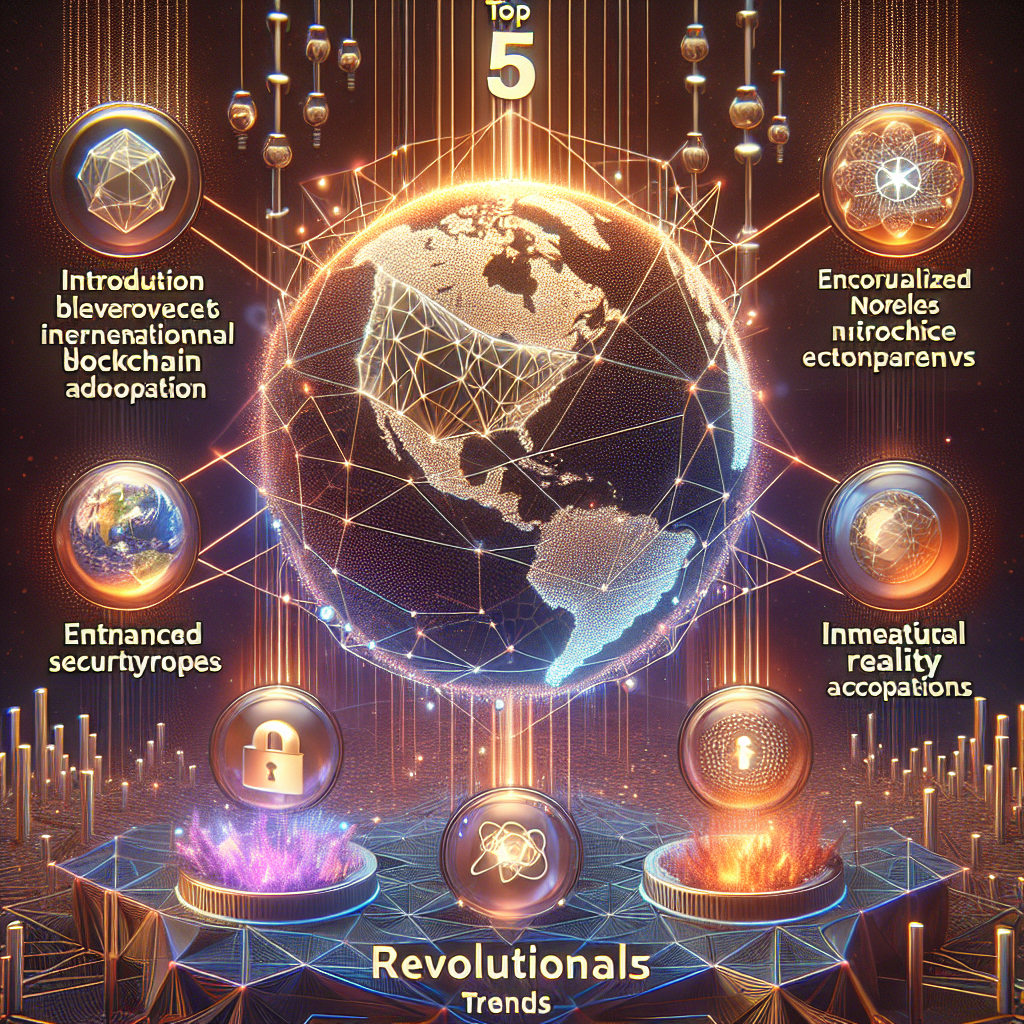As we move deeper into the digital age, the evolution of the internet is not only inevitable but also fascinating. We have transitioned from Web1, an information web, to Web2, the social web, and now we are on the brink of a new era – Web3, the decentralized web. By 2025, Web3 promises to revolutionize how we interact, transact, and exist on the internet. In this post, we will dive into the top 5 revolutionary Web3 trends to watch in 2025.
1. Decentralized Finance (DeFi)
Decentralized Finance, or DeFi, is the first trend on our list. It’s a blockchain-based form of finance that does not rely on central financial intermediaries such as brokerages, exchanges, or banks to offer traditional financial instruments. Instead, it utilizes smart contracts on blockchains, the most common being Ethereum.
In 2025, DeFi is projected to disrupt the traditional financial sector by enabling secure, open, and efficient financial services without the need for a trusted third party. This means that anyone with an internet connection can access financial services, from loans to investments, without the need for a bank account.
Pros and Cons of DeFi
- Pros: Accessibility, transparency, interoperability, programmability, and privacy.
- Cons: High risk due to lack of regulation, potential for smart contract vulnerabilities, and steep learning curve.
2. Decentralized Autonomous Organizations (DAOs)
Decentralized Autonomous Organizations, or DAOs, are a form of organization that is governed by its members via a democratic voting system, all enabled by blockchain technology. DAOs operate through smart contracts, which are pre-programmed rules that describe what actions the organization can take.
By 2025, DAOs could potentially redefine how organizations are run, moving away from traditional hierarchical structures to more democratic, transparent, and efficient ways of decision making and governance.
Pros and Cons of DAOs
- Pros: Democratization, transparency, efficiency, and resistance to censorship.
- Cons: Vulnerability to hacks, lack of legal framework, and potential for voter apathy and decision making paralysis.
3. Non-Fungible Tokens (NFTs)
Non-Fungible Tokens, or NFTs, are unique digital assets that are stored on a blockchain. Unlike cryptocurrencies like Bitcoin or Ethereum, which are fungible and can be exchanged on a like-for-like basis, NFTs each have a unique value and specific information that sets them apart.
By 2025, NFTs are expected to go beyond digital art and collectibles, impacting sectors like real estate, intellectual property, and even identity verification.
Pros and Cons of NFTs
- Pros: Ownership rights, potential for high returns, and enabling new business models.
- Cons: High energy consumption, potential for market volatility, and copyright issues.
4. Interoperability
Interoperability refers to the ability of different blockchain networks to communicate and share information with each other. This is a key trend to watch, as it will allow for a more seamless and efficient Web3 ecosystem, enabling users to interact with multiple blockchains without needing to go through a centralized exchange.
Pros and Cons of Interoperability
- Pros: Seamless user experience, increased efficiency, and potential for new business models.
- Cons: Potential security risks and technical complexity.
5. Privacy and Security
With the advent of Web3, privacy and security are set to take center stage. Unlike Web2, where user data is often controlled by centralized entities, Web3 aims to give control back to the users. By 2025, expect to see new privacy-preserving technologies such as zero-knowledge proofs and multi-party computation becoming more mainstream.
Pros and Cons of Privacy and Security in Web3
- Pros: User control over data, enhanced privacy, and increased security.
- Cons: Potential for misuse, regulatory challenges, and technical complexity.
Conclusion
Web3 is set to revolutionize the internet and the way we interact with it. From DeFi and DAOs to NFTs, Interoperability, and enhanced privacy and security, the landscape of the digital world is set to shift dramatically. By understanding these trends now, we can better prepare for the exciting future that awaits in 2025.
FAQs
1. What is Web3?
Web3, or the decentralized web, is the next generation of the internet. It aims to create a user-centric web where users have control over their own data and transactions are peer-to-peer, reducing the reliance on centralized entities.
2. How does DeFi work?
DeFi works by leveraging blockchain technology and smart contracts to create decentralized versions of traditional financial services. This allows anyone with an internet connection to access financial services without the need for a central authority like a bank.
3. What are NFTs?
NFTs, or Non-Fungible Tokens, are unique digital assets that are stored on a blockchain. Each NFT has unique information and value, which makes them different from fungible tokens like Bitcoin or Ethereum.
4. What are the benefits and challenges of DAOs?
DAOs offer benefits like democratization, transparency, and efficiency. However, they also face challenges such as vulnerability to hacks, lack of a legal framework, and potential for voter apathy and decision paralysis.
5. How will Web3 enhance privacy and security?
Web3 aims to give users control over their own data, enhancing privacy. It also leverages blockchain technology to ensure secure, transparent transactions. However, these advancements also come with challenges like potential for misuse and regulatory issues.
